Step 1 – General SEO for website
After going to the Google Search Console, and then signing up and submitting my website. It is good practise to do this to let Google know that my new website is ready to be indexed in their search results. To do this we submit a sitemap to the Google Search Console. A sitemap is a XML file that lists all of the URLs that the website needs to be indexed.
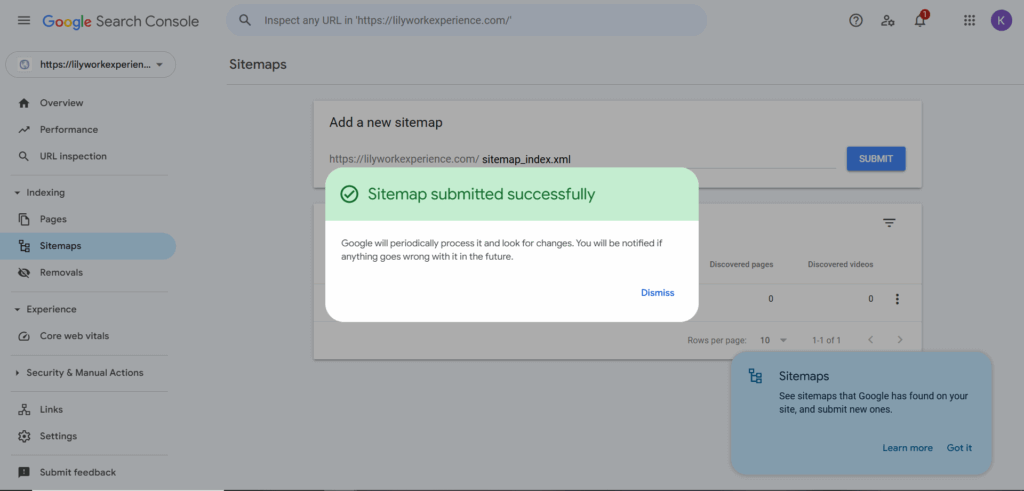
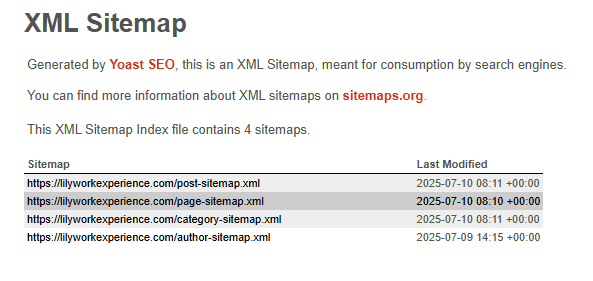
Step 2 – Setting up Google analytics
Now I must set up and install analytics on my website, this will allow me to see how many people view my website. To do this I must enter my website name and URL into the Google Analytics website, after this you’ll have to install the ‘Google tag’ which is a piece of code that collects data for Google, such as; who is visiting your website, where they are, what browser they are using, etc. Now you are able to see who views your website and what pages they enter.
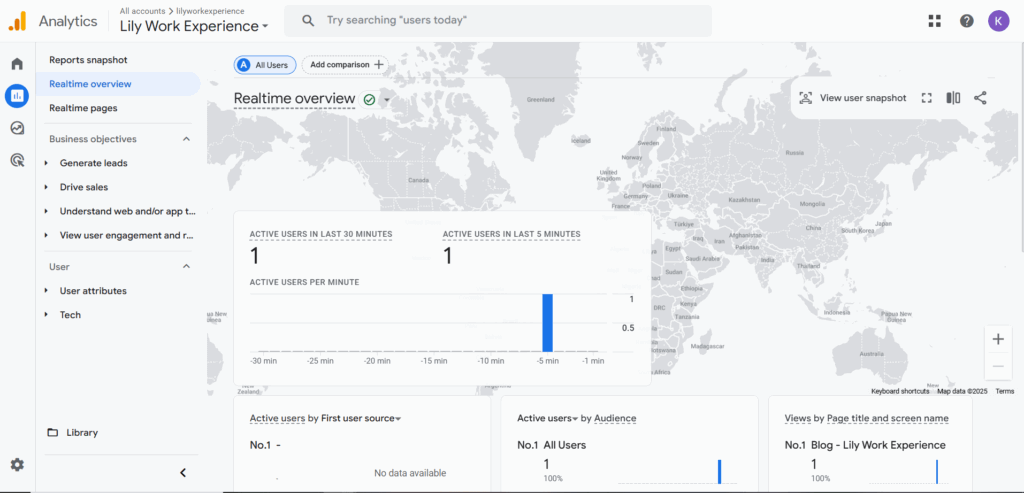
Step 3 – Bulk Optimisation of images
I installed the tinyPNG plugin, which I then used to mass compile the images in my website, this will result in a faster website due to it having to load less information. Overall, I saved 51% of my image size.
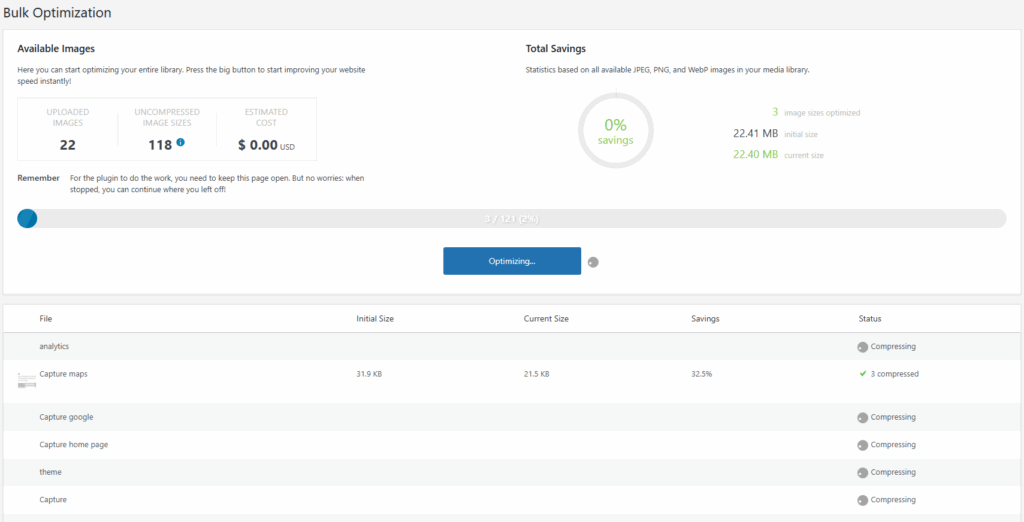
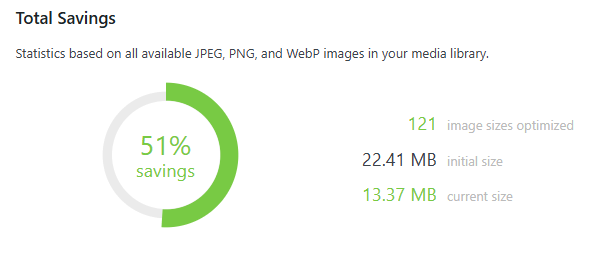
Step 4 – On page SEO
The Meta title and Meta description is an important factor of telling search engines what the page is about. I installed a plug in called Yoast SEO which does a good job of automatically generating the meta title and description, but you can optimise these further by manually changing these which I have done for my site pages.


NEW TASK – Writing for a web agency
I was given the task of writing an article for a web agency’s blog. My aim was to write from a teenage point of view, so I decided writing an article focusing on the future of websites would be a good idea. The agency has a specially trained ChatGPT model so it can easily write content in the style of the website. I used this to help me write my article, and then published it on the website.
https://www.connected-uk.com/what-the-web-might-look-like-in-10-years/
This gave me the experience of writing an article for a live web agency, which will receive real views and feedback. This also allowed me to experience how to use a bespoke ChatGPT model.
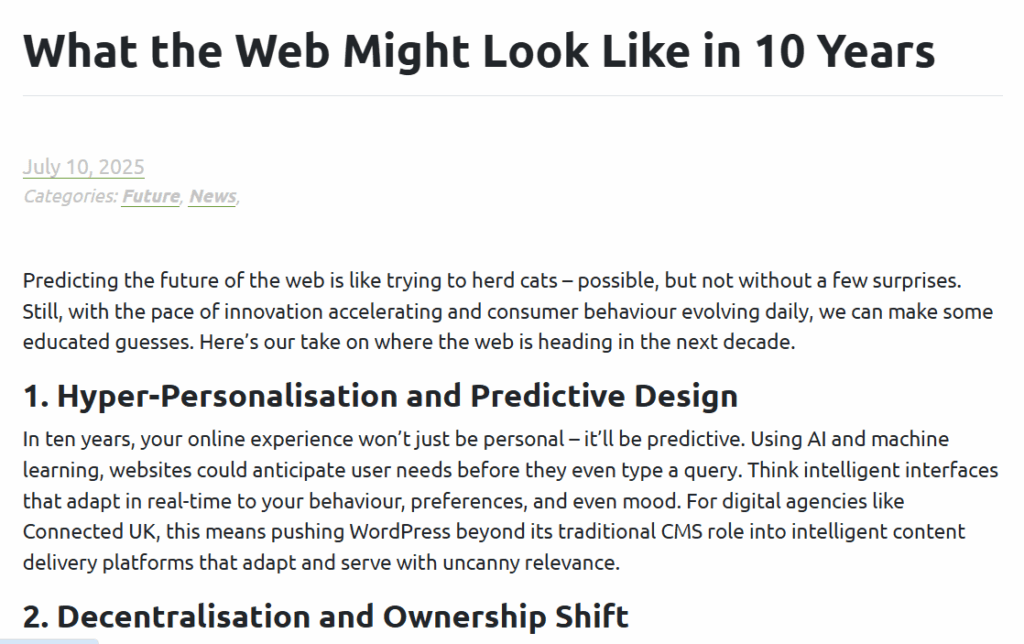
NEW TASK 2 – On page SEO optimisation for category pages on E-Commerce website
This task included me going through multiple sections on a website and editing their description, this will help customers understand what each section includes and can give them ideas for what the items could be used for. More importantly it is crucial to have text on category pages to enable search engines to know what the page includes and improve the pages ranking in search results.

